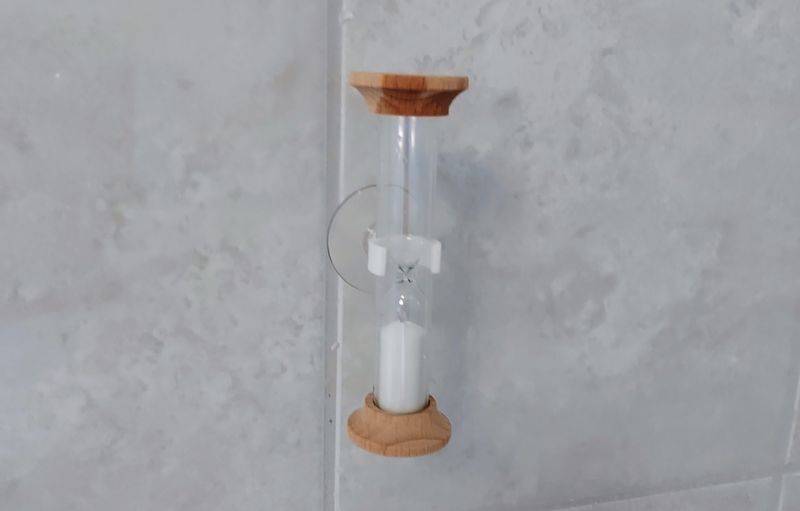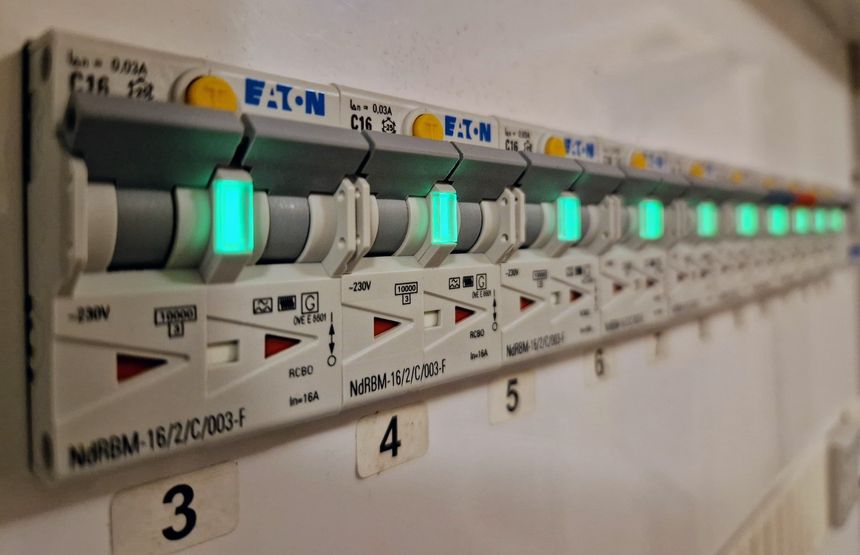With the electricity prices we’ve seen in Europe lately — I wanted to see if we could reduce our energy consumption. I’m specifically looking at “wasted” energy, meaning usage we can reduce without even noticing it.
Table of contents
Premise
Our power company, Tibber, provides real time energy usage in their app, and available through a Home Assistant integration. So we already have a good understanding of how much energy we are using, and when we are using it.
My main goal was to identify areas where we “waste” energy — which we can reduce without any behaviour or habit changes.
Outdoor lighting
We have 10 outdoor lights, each with a 6 W LED bulb. I replaced those with 2.3 W Philips low energy usage bulbs, reducing the power consumption from 60 to 23 W. They are a bit dimmer, at 485 lumens instead of the previous 800 lumens — but it’s still enough light.
I also added a 30 minute offset to the time clock relay controlling the outdoor lights; turning on 30 minutes after sundown, and off 30 minutes before sunup. The time after sundown, and before the center of the Sun’s disc goes 6° below the horizon is called civil dusk and is described on Wikipedia as:
At this time objects are still distinguishable and depending on weather conditions some stars and planets may start to become visible to the naked eye. The sky has many colors at this time, such as orange and red. Beyond this point artificial light may be needed to carry out outdoor activities, depending on atmospheric conditions and location.
This means the outdoor lights are on one hour less everyday, 30 hours per month, and 365 hours per year. It adds up 🙂
- Offset 30 minutes from sundown and sunup
- More efficient light bulbs, with lower lumen
- 6 W -> 2.3 W
Indoor lighting
We used to have the kitchen hood lights on all the time, we didn’t really bother turning them off and they worked as a decent night light for the kitchen — that is 16 W, 24/7. I now have a Aqara motion sensor in the kitchen, turning the hood lights off together with the digital calendar, if there is no movement for an hour, or when the security alarm is turned on.
Next we replaced the light switch in the laundry room with a motion sensor; 23 W that turns off automatically.
We have a lamp in the living room window post that we use as an evening/night light. It used to have it on all the time, but I’ve now connected it to a Hue smart plug. So it turns on 30 minutes before sundown, and off 30 minutes after sunup. The lamp has a 4 W bulb, so it’s not much, but it’s not nothing 🙂
It’s hard to get our kids to turn off the light in their rooms when they are not there, we have tried — but so far, it’s been unsuccessful. We’ll keep reminding them, but I am thinking about how I can automate it :thinking_face:
- Turn off kitchen lights after one hour, motion sensor
- Kitchen hood lights: 16 W
- Install motion sensor on laundry room lights
- 2x4 W + 15 W = 23 W
- Turn off “always-on” lights during the day
- Livingroom: 4 W
Hot water
I bought a cheap hourglass with a suction cup that we placed in the shower. It takes five minutes for the sand to run out. Everyone in the household now finishes showing within those five minutes.
Especially our twins used to take long showers, actually I’m a bit guilty of that myself 😛 But not anymore!
This is the most energy saving measure I’ve done, but exactly how much energy we are saving is hard to quantify.
- Quicker showers, timer/hourglass

Ventilation
When the security alarm is armed away; the ventilation system goes into away mode. This lowers the supply air temperature from 20°C to 18°C, and the fans reduce from 50% to 20%.
- Lower ventilation to away when house is empty
- Normal: 37 W
- Away: 12 W
Computers
The twins’ computers automatically goes to sleep when not used for a while — but they are both good at turning them off. I, however, have been leaving my desktop on all day… And with an old and inefficient computer, using 115 W idle, that accumulates to a lot of wasted energy.
So now I always turn my desktop computer off before I go to bed. And I have rebuilt my server Alpha, and used the old parts for my desktop, reducing the idle power usage from 115 W to 60 W.
- Always turn off computer at the end of the day
- Replace main desktop parts, more efficient computer
- Sigma: 115 W -> 60 W
Homelab
I finally took the time to remove my EdgeRouter, and using the virtual Mikrotik CHR router for everything. Eliminating the 7 W used by the EdgeRouter in the process 🙂
Next I turned off my file server Zeta… Yes, turned it off. It had 16 spinning disks, giving me 72 TB of usable storage. But I don’t really need 72 TB of storage. So instead I bought 3 × Toshiba MG09 18 TB disks and put in my hypervisor Alpha. With RAIDz1 I have 36 TB of usable storage, which is enough for my need.
I went with RAIDz1 because I’m going to use Zeta as a backup server, leaving it off most of the time. I figured one disk redundancy was enough with everything backed up on a second server.
Turning off my file server dropped the power usage of the homelab rack by 135 W.
I got some used computer parts from my in-laws, that I used for my Alpha server — reducing the power draw by 15 W, and it’s still plenty powerful. The motherboard and CPU from Alpha was used in my desktop computer, making it more powerful and drastically reducing the power usage 👍
At the moment I’m only running three servers in the rack:
- Proxmox for virtual router and DNS server
- Proxmox as main hypervisor and file server
- Ubuntu Docker host
The total power consumption of the homelab rack is now only 210 W, this includes all access points in the house. Not bad 😎
- Finally remove the EdgeRouter Power usage: 7 W
- Replace the file server with 3 x 18 TB disks in Alpha
- File server: 135 W
- Lower spec parts in hypervisor
- Alpha: 60 W -> 45 W
Network
There wasn’t really that much I could do with the power usage of my network equipment, but I did replace the 24 port PoE switch in the garage. It was way overkill, as I was only using two port. I got a cheap TP-Link PoE switch instead, and reduced the power consumption from 20 W to 5 W 👍
Under-utilized power supplies are not as efficient, and my 24-port PoE switch was definitely under-utilized.
- 24 port PoE switch in garage, replaced with 8 port
- Power usage: 20 W -> 5 W
- Under-utilized power supplies are not as efficient
Stand-by power
And last, but not least, I looked at stand-by power. I’ve been reading lots of articles recommending to pull the plug in TVs, media equipment, unused chargers, etc. Because they use lots of power when turned off.
My findings does not support that claim. I was actually surprised how little stand-by power our devices use. Most of our gear is new, or relatively new (except the Microwave), and that most certainly makes a big difference.
- Home office (2.6 W)
- Monitor 32"
- Monitor 27"
- Monitor 34" curved
- Argon active speakers
- Laptop charger HP ZBook
- Media 1st floor (3.3 W)
- 65" TV
- Soundbar + Subwoofer
- NVIDIA Shield 2019 Pro
- Nintendo Switch
- Media 2nd floor (5.5 W)
- 50" TV
- Sony Playstation 4
- NVIDIA Shield 2017 Pro
- Network switch, 5 ports (3 W)
- Kitchen electronics (3.2 W)
- Monitor 24"
- Anker PowerPort Atom III
- Raspberry Pi 3
- Misc
- Cordless vacuum: 0 W
- Robot vacuum: 2.2 W
- 2 x electric toothbrushes: 0.5 W
- Makita DC18SD charger: 1.7 W
- Microwave: 4.1 W
Looking at these numbers; the only two things I now unplug is the Makita charger, and the microwave. Both are things that we very rarely use.
My home office devices, media devices, and kitchen electronics all use very little power in stand-by. And there are some draw-backs of unplugging those… Some devices take a long time to start back up, the NVIDIA Shield actually turns on when plugged in, and that again turns on the TV.
It’s also important to remember that smart plugs also have a stand-by power draw. Wi-Fi plugs can draw up to 1 W — Zigbee plugs usually less, 0.5 W or so. So if you are using a Wi-Fi smart plug, to eliminate a 3.3 W stand-by power draw, you are only saving 2.3 W. My conclusion was that it simply wasn’t worth chasing loads that low.
How much did we reduce?
So how much less energy are we now using? I have to make some assumptions on time here, but here is the overview:
| Load | Watt reduced | Hours per day | kWh per day |
|---|---|---|---|
| New outdoor bulbs | 37 | 12 | 0.444 |
| Offset outdoor lights | 23 | 1 | 0.023 |
| Kitchen hood light | 16 | 16 | 0.256 |
| Motion sensor laundry room | 23 | 8 | 0.184 |
| Night light living room | 4 | 12 | 0.048 |
| Ventilation away | 25 | 8 | 0.2 |
| Turn off computer | 115 | 16 | 1.84 |
| New computer parts | 55 | 4 | 0.22 |
| Turn off file server | 135 | 24 | 3.24 |
| Remove EdgeRouter | 7 | 24 | 0.168 |
| New switch garage | 15 | 24 | 0.36 |
| New parts in server | 15 | 24 | 0.36 |
| Turn off microwave | 4 | 24 | 0.096 |
| Turn off Makita charger | 1.7 | 24 | 0.0408 |
In total this is:
- 7.4798 kWh per day
- 224.394 per month
- 2839.408 per year
Not including the reduced hot-water cost, that is just to difficult to measure.
I’m no longer as laser-focused on power usage, but it was a good learning experience — and it made both Mona and I think twice about unnecessary power usage.
🖖
Last commit 2024-11-27, with message: Add some missing figure captions.

